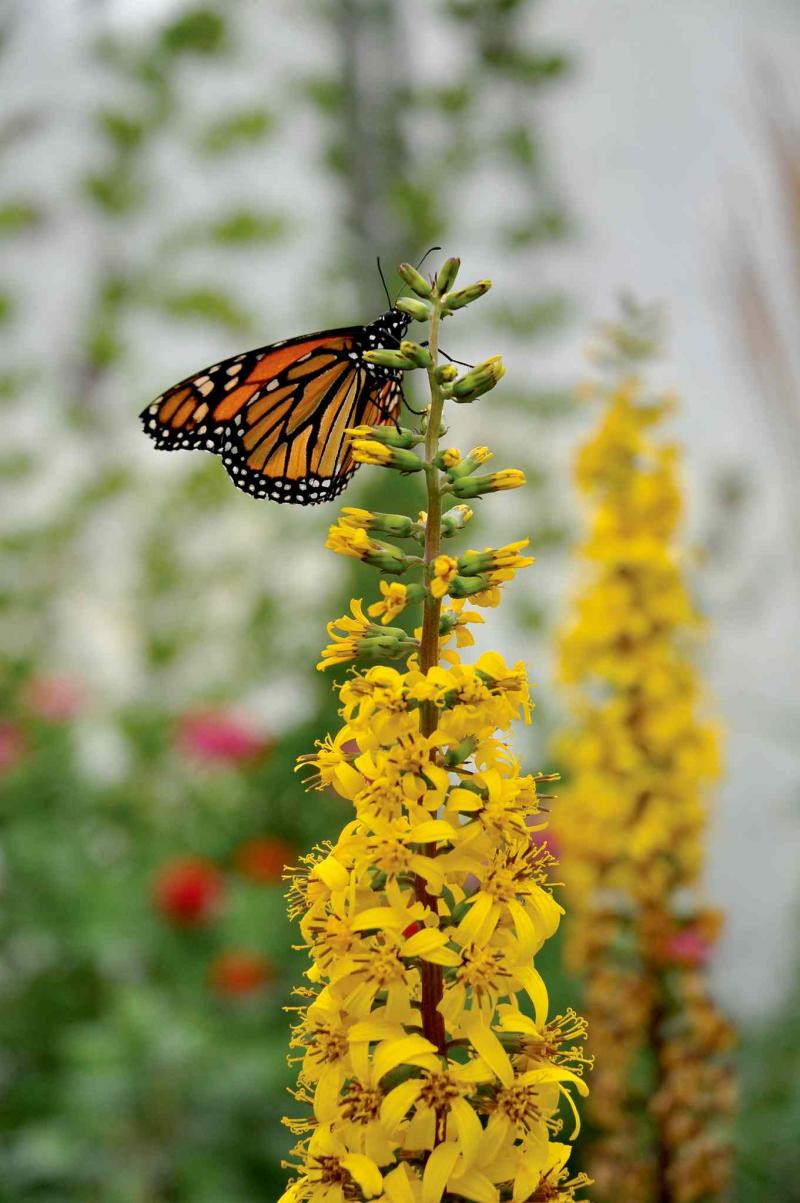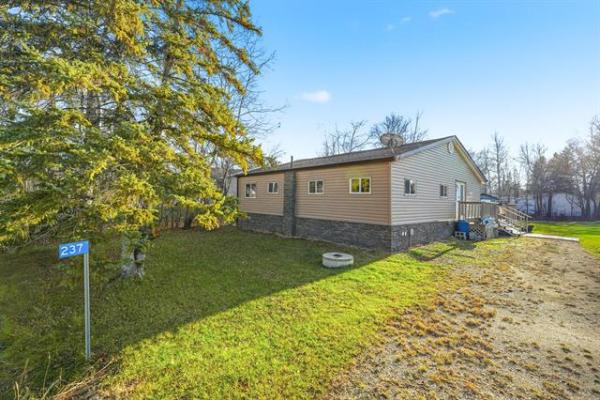
Last November gardeners braced themselves for potential plant losses when temperatures suddenly plummeted from 0 degrees on Nov. 23 to -28 C by Nov. 26. Without the benefit of at least a few protective centimetres of snow cover at the time, none of us could be certain that even a generous covering of shredded leaves on perennials would be enough to ensure their survival, particularly those that might be borderline hardy.
The list of casualties appears to be a long one, according to many local gardeners, and includes everything from hardy roses to herbaceous peonies, daisies, coneflowers, coral bells, sedums, etc. Some species that have survived have experienced a delay in their growth or bloom period while others have waited until just recently before finally poking out of the ground, a mere fraction of the size they might normally be at this time of year.
Laments aside, the loss of several plants or even a few strategic ones can be the catalyst for reinventing and improving your perennial bed. A good replacement strategy begins by assessing the size of the space you are planning to fill and determining environmental factors such as available sunlight and moisture as well as prevailing wind direction.
In addition to selecting plant varieties that not only encompass aesthetics, hardiness and suitability for a particular site, consider those that will also attract pollinators. Pollen, for example, is an important source of protein for visiting pollinators. Nectar is a source of carbohydrates that provide valuable energy for foraging and nesting. While native plants have the distinct advantage of being adapted to growing in our harsh environment as well as having an abundance of nectar and pollen, showier non-native varieties are sources as well.
By now everyone has heard the increasingly dire warnings about declining bee and butterfly populations. While scientists look for causes and solutions, the average person with a bit of growing space has the opportunity to grow pollinator-friendly plants.
Kelley Liebzeit sees it as a responsibility and has made it her personal mission to educate herself and others on ways to attract pollinators such as honey bees, native bees, butterflies and hummingbirds and in turn benefit the ecosystem in her backyard and neighbourhood. Does this mean her garden is a natural foraging area planted exclusively with Joe-Pye Weed and milkweed?
Liebzeit's large urban backyard in south Winnipeg consists of a series of garden rooms connected by a winding pathway that guides visitors past a vast array of plants, many of which are identified by handcrafted copper plant markers. The diverse mix includes Black Lace sambuca, Mother of Thyme, John Cabot rose, phlox subulata, ligularia, variegated eryngium, sea holly, lupine, turtlehead, columbine, meadow rue, clematis, false indigo and Johnson's Blue geranium.
Distinctly native varieties include purple prairie clover, dotted blazing star (liatris), anise hyssop, Queen of the Prairie, and asclepias or milkweed.
Liebzeit says her education in plants and their relationship to pollinators began four years ago when she attended a Naturescape program at Fort Whyte Alive. She began to think of perennials in terms of host plants and nectar plants. Providing host plants, for example, invites female butterflies to lay their eggs and provides food for their offspring. The monarch butterfly will only lay its eggs on the milkweed plant.
Next, she set out to attract specific butterflies to her garden and joined forces with a neighbour in planting larval host plants such as pussy toes and pearly everlasting which attract the American Lady butterfly. Golden Alexanders is a spectacular dill-like flowering perennial forb of the carrot family and is a larval host plant for the black swallowtail.
Don't mind butterflies sipping on a bit of nectar but nervous about caterpillars feeding on leaves? Any damage is usually temporary. For Liebzeit it's a badge of honour. In addition to her garden being certified by Fort Whyte Alive and the North American Butterfly Association, it has also been certified and registered by MonarchWatch.org as an official monarch waystation.
Marilyn Latta is a St. Vital gardener whose perennial garden has been designed with the distinct goal of getting the most out of the growing season. She gardens for all seasons selecting plants for a changing palette of colour and blooms. In this way something is happening all the time, she says, but also, pollinators can find lots to feed on even in April and May.
Latta keeps an inventory of all of her plants and records their bloom periods. She also assesses the changing light patterns. This has proven to be an important tool in planning her garden, resulting in pleasing combinations as well as colour echoes and repetition throughout for a cohesive effect.
Latta mulches her beds with wood chips to conserve moisture and uses a water soluble fertilizer although does not fertilize some of her native plants such as baptisia. She takes an organized approach to garden chores; for example, one day she might fertilize her collection of primroses, and another day all of her bulb plants.
If native plants bore you, a walk through Latta's garden would have you scrambling to find some for your garden. I am ready to toss every coral bells variety I've tried and failed to grow for Brandon pinks coral bells which in Latta's garden grow to the size of small shrubs, every leaf sheer perfection. Latta has grown hers for 25 years.
While Latta's garden is home to some familiar perennials such as iris, fern leaf peony, columbine, martagon lilies, clematis, forget-me-nots, hens and chicks, Solomon seal, ligularia, and native asters, she also grows numerous varieties that are less common.
Blue Dreams nepeta, for example, is a zone 4 catmint with glossy green leaves. Hepatica and bloodroot, two of the earliest bloomers, marsh marigold, dwarf trollius, bellwort, a Pink Diamond hydrangea that grows to 152 cm, and an exquisite grouping of Jack-in-the-Pulpit plants along with white-flowered trillium are just a few of the interesting plants that can be discovered in Latta's garden.
Dave Hanson, owner of Sage Garden Herbs, says that getting to the heart of what you want planted in your perennial bed involves some practical considerations such as size and placement. Including a focus on pollinators encompasses a broad range of plant material, says Hanson.
"Most plants that are vividly coloured and flowering will attract pollinators," says Hanson who acknowledges that while agastache anise-hyssop is a phenomenal plant in the summer, attracting bees, butterflies and hummingbirds, its nondescript appearance at the garden centre in May can cause it to be passed over.
I asked Hanson why daisies, coneflowers and rudbeckia, such magnificent bloomers, don't always come back the following spring. Hanson suggests that many new introductions are not truly zone 3 hardy. It's easy to get caught up in wanting the latest and greatest double-flowering varieties which may not be suited to our unique climate conditions.
Hanson stresses the importance of good drainage since these plant types are sensitive to wet feet. When he decided to grow some of the more exotic varieties of echinacea that he carries such as hot papaya and pink poodle in wooden raised beds, their performance was dramatically different. The loamy soil that had been added to the raised beds provide excellent drainage and the plants bloom brilliantly, returning each spring.
Hanson says it is important to provide different height variations in a perennial bed but to also ensure there are structural points in the landscape such as trees and shrubs for interest during winter and early spring. Latta's landscape, for example, includes a wide spreading Ohio Buckeye tree. Liebzeit grows numerous lilacs and trees such as Autumn Blaze Maple.
The success of a perennial begins at the time it is removed from its nursery container. "It's common for nursery plants to have their roots tightly bound," says Hanson who recommends crunching open a newly purchased plant's dense root system so roots can spread nicely.
Hanson adds bone meal to the planting hole. A great source of phosphorus, bone meal promotes strong root growth. He also adds water to the planting hole before adding the plant and backfilling. While this process can get a little sloppy, it's also beneficial, says Hanson, because the entire root space of the plant becomes adequately hydrated. Pouring from the top after planting can result in water draining away from the root space.
To ensure good root establishment, key to winter survival, water deeply once a week throughout the summer months, ensuring that moisture is directed to the root zone.
colleenizacharias@gmail.com



